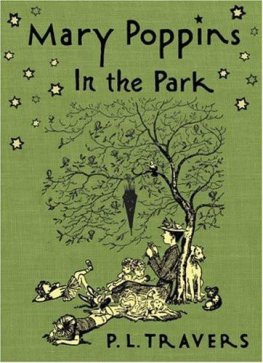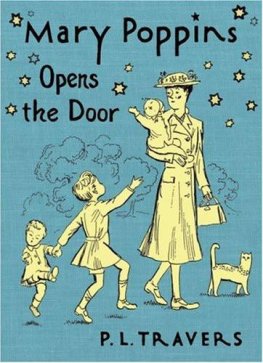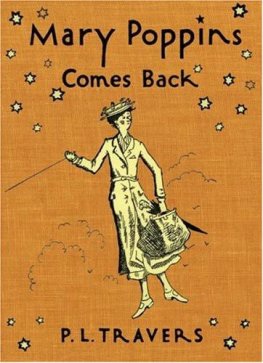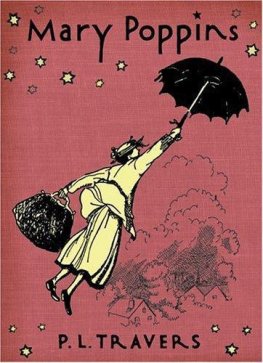Valerie Lawson - Mary Poppins, she wrote: the life of P. L. Travers
Here you can read online Valerie Lawson - Mary Poppins, she wrote: the life of P. L. Travers full text of the book (entire story) in english for free. Download pdf and epub, get meaning, cover and reviews about this ebook. City: L., year: 2005, publisher: Aurum, genre: Art. Description of the work, (preface) as well as reviews are available. Best literature library LitArk.com created for fans of good reading and offers a wide selection of genres:
Romance novel
Science fiction
Adventure
Detective
Science
History
Home and family
Prose
Art
Politics
Computer
Non-fiction
Religion
Business
Children
Humor
Choose a favorite category and find really read worthwhile books. Enjoy immersion in the world of imagination, feel the emotions of the characters or learn something new for yourself, make an fascinating discovery.

- Book:Mary Poppins, she wrote: the life of P. L. Travers
- Author:
- Publisher:Aurum
- Genre:
- Year:2005
- City:L.
- Rating:4 / 5
- Favourites:Add to favourites
- Your mark:
- 80
- 1
- 2
- 3
- 4
- 5
Mary Poppins, she wrote: the life of P. L. Travers: summary, description and annotation
We offer to read an annotation, description, summary or preface (depends on what the author of the book "Mary Poppins, she wrote: the life of P. L. Travers" wrote himself). If you haven't found the necessary information about the book — write in the comments, we will try to find it.
Mary Poppins, she wrote: the life of P. L. Travers — read online for free the complete book (whole text) full work
Below is the text of the book, divided by pages. System saving the place of the last page read, allows you to conveniently read the book "Mary Poppins, she wrote: the life of P. L. Travers" online for free, without having to search again every time where you left off. Put a bookmark, and you can go to the page where you finished reading at any time.
Font size:
Interval:
Bookmark:

Thank you for downloading this Simon & Schuster eBook.
Join our mailing list and get updates on new releases, deals, bonus content and other great books from Simon & Schuster.
C LICK H ERE T O S IGN U P
or visit us online to sign up at
eBookNews.SimonandSchuster.com

For Lucy and Annie
What we call the beginning is often the end
And to make an end is to make a beginning.
The end is where we start from. And every phrase
And sentence that is right (where every word is at home,
Taking its place to support the others,
The word neither diffident nor ostentatious,
An easy commerce of the old and the new,
The common word exact without vulgarity,
The formal word precise but not pedantic,
The complete consort dancing together)
Every phrase and every sentence is an end and a beginning,
Every poem an epitaph. And any action
Is a step to the block, to the fire, down the seas throat
Or to an illegible stone: and that is where we start
We shall not cease from exploration
And the end of all our exploring
Will be to arrive where we started
And know the place for the first time.
T. S. Eliot,
Little Gidding,
Four Quartets
W hen the poet Ted Hughes was sent a collection of Mary Poppins books, he wrote in a note of thanks to the publisher, Collins:
Im sorry my wife, Sylvia Plath, could not see these because Mary Poppins was the fairy godmother of her childhood. She spoke of her a great deal.
As Plath instinctively knew, Mary Poppins was not so much a plain old nanny as a good mother from a fairy tale. Hiding behind the facade of a British nanny pushing a pram in Kensington, Poppins was more magical than Cinderellas godmother, more mysterious than the good fairy of The Sleeping
In Mary Poppins, Travers created more than the saccharine image we know from the Walt Disney movie of the 1960s. Poppins has lasted because she is as peculiar as she is kind, as threatening as she is comforting, as stern as she is sensual, as elusive as she is matter of fact. Where did she come from, where did she go? The Banks children, her charges, knew only one thing: out of the sky she came, and back to the sky she would go.
Since the first book was published in 1934, Mary Poppins has become imprinted in the popular culture of many countries, almost a cartoon character, reinforced by the Walt Disney movie of 1964, its rereleases in 1973 and 1980, then the movies release on video and DVD. The six Poppins books are still in print and have been translated into more than a dozen languages. The words Mary Poppins have become a catchphrase, a slogan, for an idealized woman. Most recently, the nanny made a reappearance in The Simpsons, transformed into Sherry Bobbins, who tried, but failed, to make order of the chaos in that household. Even that treatment did not destroy her. Instead, it enhanced her.
The image of Mary Poppins with her umbrella flying over the rooftops of London is indelible, but the concept of Mary Poppins is even stronger, implying a secure childhood and an answer to womens perennial problem: how to balance their lives between their needs and their familys demands.
Mary Poppins flew into a 1930s household where the mother did not work. (In the movie Mrs. Banks became a silly suffragette, an interesting change of perspective which represented Walt Disneys response to the dawn of the new age of feminism.) By the end of the twentieth century, most women did work and most mothers need child care. If they can afford it, they hire a nanny; if not, the nanny is a worker in a child care center or a family day-care home. Whoever the caregiver is, the mother and father are ambivalent about the surrogate parent.
The parents want to believe the best but often they sense, or imagine, a bad witchs face behind the good. The mother feels anxious that the nanny will steal either her child or her husband. (In popular culture the nanny is often portrayed as a bimbo, marking time while she lures a husband, like Fran Fine, the pretty Jewish nanny with the fabulous clothes in the TV series.)
Parents anxieties are reinforced by the vivid accounts of real-life nannies who kill by shaking a helpless baby to death. As they leave the law courts, the nannies look like freshly scrubbed angels, their blond hair held back by an Alice band, their hands clasping a handbag, their body enclosed in a neat little suit.
Hammer Studios understood all this very well. In 1965, a year after the film Mary Poppins was released, the English company which specialized in horror movies released The Nanny, in which Bette Davis in the title role is referred to as Mary Poppins. Davis plays a really scary crone. Those bug eyes perform their usual Davis magic under sinister black slashes of eyebrows. By night, this nanny braids her hair into a Poppinsish plait.
In the first household scene, we see the mother in hysterics. Her young son is due home from a mental institution where his chilly father and hapless mother had sent him. The boy had refused to eat or sleep, claiming the nanny planned to poison him or drown him in his bath. It is clear that something awful has happened to his little sister. Daviss nanny creates a sense of unease and distrust as she infantilizes the incompetent mother. She alternates between spoon-feeding her mistress and calling her Modom. Toward the end of the movie, when we realize the nanny is a psychopath, Davis says: Being a nanny is based on trust.
The Nanny represents the negative image of the positive Mary Poppins , black to white, evil to goodness, the Wicked Fairy to the Good Fairy. The Nanny has come to kill. Mary Poppins has come to repair, to make order from disorder, to create unity from disunity. Once she has done so, Mary can leave for a secret place in the heavens.
Pamela Travers once said: A Zen priest with whom I studied told me that Mary Poppins was full of Zen, that in every Zen story there is a single object which contains a secret. Sometimes the secret is revealed, sometimes not. It doesnt matter, but it is always present.
The same can be said of Traverss own life. Almost everyone has heard of Mary Poppins but hardly anyone knows of Pamela Lyndon Travers. I dont want to be labeled. Ive got a distaste for it, she once told an interviewer.
No, she placed it in labeled boxes instead. If Travers had been serious in her wish for privacy, she would have destroyed all her personal letters, all her notes, all the audiotapes made of her lectures, formal and informal, and her collection of photographs. Instead she sold her papers, including private papers, to the Mitchell Library in Sydney, where access to the material is unrestricted. Each photograph and letter and poem and haphazard thought was carefully preserved and even annotated for future readers. But perhaps by leaving such a large treasure trove Travers was trying to label her own life rather than have anyone else interpret it.
Despite her wish that no biography be written, I believe her death meant the ground rules changed. I took the same point of view as the biographer Michael Holroyd, who has said
For me, Travers became more fascinating the more I learned of her mystery. That was what intrigued me most, not her subject matter, although I liked Mary Poppins as a child, and understood the feelings of both comfort and fear of having a nanny. Our nanny was HendyMrs. Henderson, from next doorwho baked Afghan biscuits and was proper, fair, and gruff. She had such a different manner from my mother, who looked softer, but was just as determined. My mother workedan unusual thing for a New Zealand woman in the 1950s. I loved Hendy yet I sometimes feared her.
Font size:
Interval:
Bookmark:
Similar books «Mary Poppins, she wrote: the life of P. L. Travers»
Look at similar books to Mary Poppins, she wrote: the life of P. L. Travers. We have selected literature similar in name and meaning in the hope of providing readers with more options to find new, interesting, not yet read works.
Discussion, reviews of the book Mary Poppins, she wrote: the life of P. L. Travers and just readers' own opinions. Leave your comments, write what you think about the work, its meaning or the main characters. Specify what exactly you liked and what you didn't like, and why you think so.









